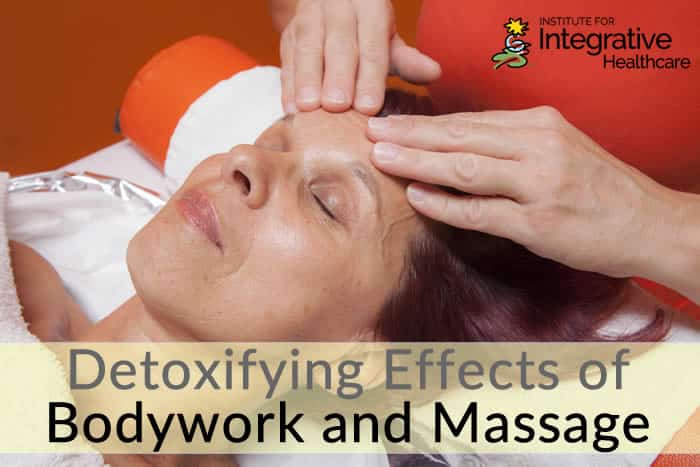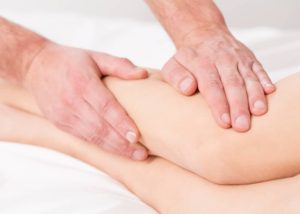

What Is Detoxification?
Clarity is needed at this point to correctly identify the term detoxification at this time. Some massage therapists use this term to describe the removal of waste from the body. The true medical definition of detoxification is the “physiological or medicinal removal of toxic substances from a living organism, including the human body, which is mainly carried out by the liver.” (1)
Medical detoxification safely manages the acute physical symptoms of withdrawl associated with stopped drug use. This step is the first step of addiction treatment (2). Efficacy of detoxification efforts becomes a prelude to the effectiveness of subsequent treatment.
Massage Therapy’s Role in Detoxification
In recent decades, massage therapy’s role in addiction treatment has been explored as a means of aiding the detoxification efforts of addiction patients. A myriad of Complimentary and Alternative Medicine (CAM) approaches have been employed for addiction patients, with massage being prominently utilized.
One significant study highlighting massage’s effectiveness is a study published in the Journal of Alternative & Complimentary Medicine indicating chair massage was more effective than pharmacologic relaxation control in easing anxiety management and detoxification efforts in 82 patients withdrawing from psychoactive drugs (3).
A similar study in the same journal highlighted 50 patients recovering from alcoholism indicated that massage for the neck, back, shoulders and head reduces Alcohol Withdrawl Scale scores in the early stages of these patient’s detoxification process (4).
These studies show great promise in the role massage therapy may play with addiction recovery patients.
In the case of alcoholism, there are three primary stages of withdrawl from alcohol:
- Stage 1: Anxiety, insomnia, nausea and abdominal pain (typically beginning 8 hours after last alcoholic consumption)
- Stage 2: High blood pressure, increased body temperature, irregular heart rate, confusion (typically 24-72 hours after last alcoholic consumption)
- Stage 3: Hallucinations, fever, seizures, agitation (typically 2-4 days after last alcoholic consumption)
All symptoms tend to decrease within 5-7 days. (5)
Massage therapy’s positive physiological effects, as defined as classic “Swedish massage,” can support a patient during detoxification efforts. Massage therapy aids in lymphatic drainage, promotes immune system health and function, and enhances overall well-being sensation by improving sleep and relaxation, increasing serotonin and dopamine levels, and activating parasympathetic response (6).
Additionally, massage therapy’s psychology effects can support detoxification efforts.
Massage therapy promotes relaxation, reduces stress and anxiety, promotes well-being to combat depression, and has been useful in treating hyperactivity disorders. These effects can bring ease to mind and body of detoxing patients to further aid their efforts (6).
Lymphatic Massage

Lymphatic massage is a modality often utilized in removal of metabolic waste from the body. This style places emphasis on encouraging swifter movement of lymph fluid through the body’s lymphatic system.
The lymphatic system is the “waste management” system of the body. Its primary role is to mobilize metabolic and cellular waste through a series of nodes to cleanse and remove this waste. By the time lymph fluid has been processed through the lymph node and vessel network, this fluid has been thoroughly cleansed and returned to the cardiovascular system via the superior vena cava.
Lymphatic massage techniques vary depending upon the company and instructor presenting this modality. Amongst the most respected variations is manual lymphatic drainage (MLD), a bodywork technique developed by Dr. Emil Vodder in 1932. Dr. Vodder’s work was based upon the research and findings of Frederick Millard ten years prior and ushered in a new branch of clinical bodywork. Dr. Johannes Asdonk scientifically researched and confirmed the effectiveness of Dr. Vodder’s MLD method in the 1960s. By 1990, Dr. Bruno Chickly further researched and created Lymph Drainage Therapy (LDT) to further aid lymphedema patients. (7)
During the 1980s, Drs. Michael and Ethel Foeldi developed Complete Decongestive Therapy (CDT) to aid lymphedema patients. This therapy augmented the manual therapy developed by Dr. Vodder. Both Foeldi and Chickly’s methods were paramount in the confirmation that the lymphatic system was a necessary system to address manually.
The lymphatic system does not possess a muscular pump, such as a heart; therefore, it is discovered the three main ways to mobilize lymph through the body are:
- movement
- deep breathing
- and manual therapies (7)
By aiding the removal of metabolic waste, interstitial spaces (found between cells and circulatory vessels) are cleansed leading to ideal conditions of healthy cellular upkeep within the body. Healthier cells maintained in a proper fluid environment will keep cells vital. This seems to aid in massage’s physiologic and psychological benefits.
This is not to be transposed with medical detoxification which manifests primarily as a liver function to filter drug-related components from the blood. Increased circulation of blood does not necessarily make the liver itself function better.
Drug elements absorbed from the gastrointestinal tract are sent directly to the liver via the hepatic portal vein. Specialized liver enzymes break down these drug elements to metabolize these components that potentially weaken the drug’s effects. Some drugs are administered via the anal canal, sublingual, nasal or urogenital routes to avoid the liver’s first pass effect, thereby maintaining potency factor. (8)
Conclusion
The aforementioned studies indicate that general massage efforts aiding the removal of metabolic waste may assist in the body’s physiological and psychological healing processes of detoxification.
Studies involving lymphatic massage specifically refer to oncology and lymphedema patients.











